During Chinese Culture Week at the Primary School, which took part in February, each Year had its own cultural theme. For instance, Year 5’s activity was themed around the beauty of Chinese characters. In order to help students understand the beauty of the Chinese written language, as well as its origin and evolution, teachers combined material from famous texts on the subject such as "The Evolution of Chinese Characters" and "The Discovery of Oracle Bone Inscriptions" with hands-on activities such as calligraphy writing and the design of t-shirts featuring Chinese characters. Students also gave presentations about Chinese characters. Over the two-week period, students significantly expanded their knowledgeof the written Chinese language.
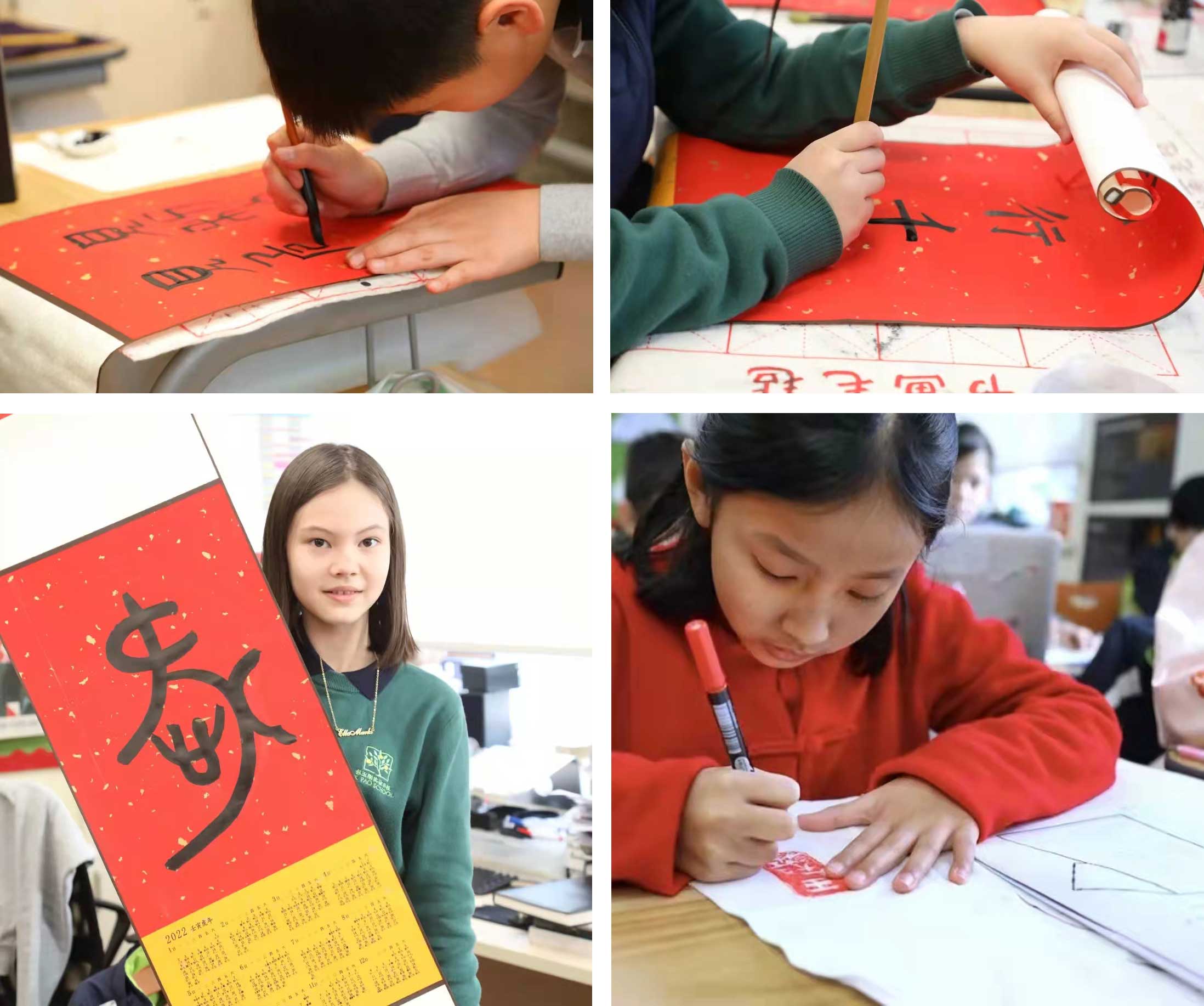
Year 5s learn more about Chinese characters through calligraphy writing and t-shirts design
Tea culture in China has an esteemed and long history. In Year 4, students took part in activities surrounding Chinese tea culture and studied a famous text about tea written by Lu Yu in the Tang Dynasty. They also learned about the origins of Chinese tea culture, from tea cultivation to utensils to tea drinking habits. During the week, students also took part in a Tea Expo, students in groups each selected one type of Chinese tea which they researched in detail, brewed and introduced to visitors (who could sample the tea). This activity has deepened the children’s knowledge of Chinese tea culture and will allow them to appreciate it more in the future.
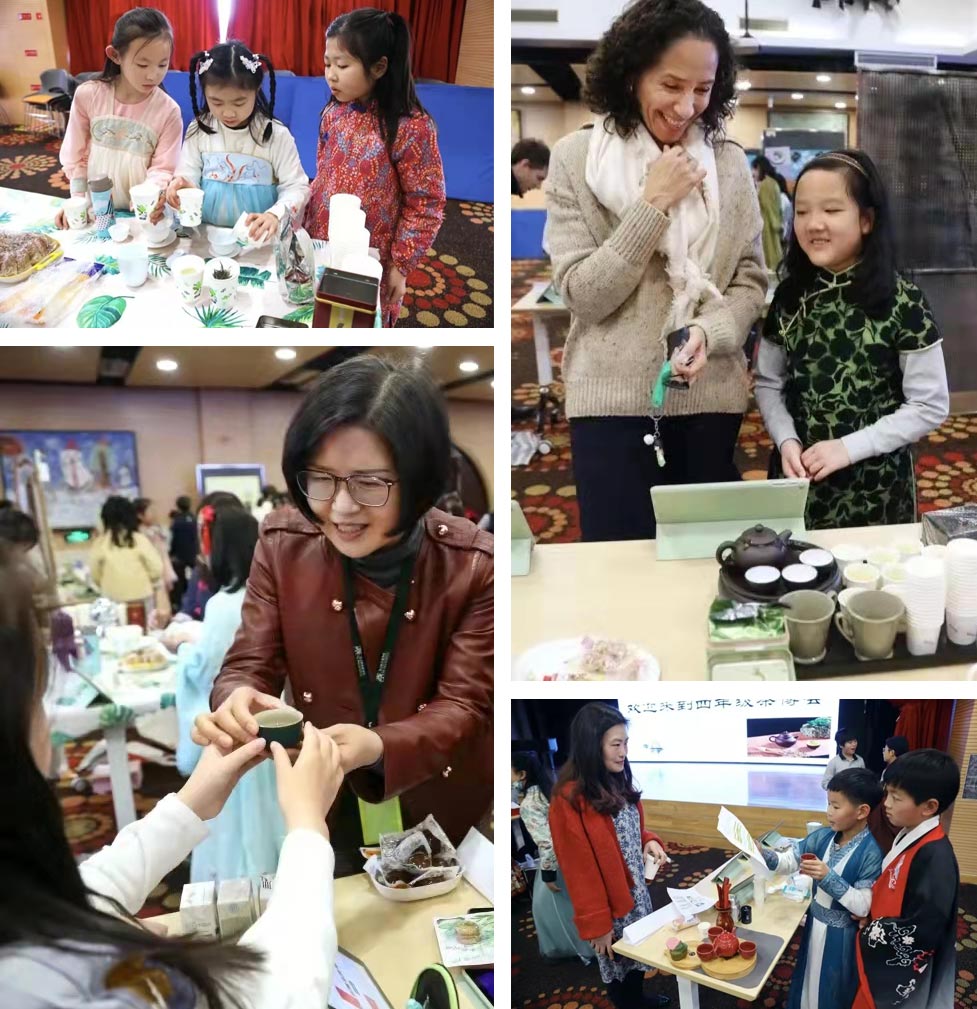
Year 4 Tea Expo
The countdown to the opening ceremony of the Beijing Winter Olympics showcased Chinese-style whimsy and also introduced the traditional Chinese calendar to the world – along with the twenty-four solar terms that make it up. The Year 3 activity was therefore based on the theme of traditional festivals and the twenty-four solar terms. As part of the activity students completed a number of activities, including studying the solar terms’ origin and meteorological characteristics. They also learned traditional culture surrounding the solar terms, including songs, important traditional festivals, poems, and, most interestingly, made dishes with cultural significance.
Making Yuanxiao
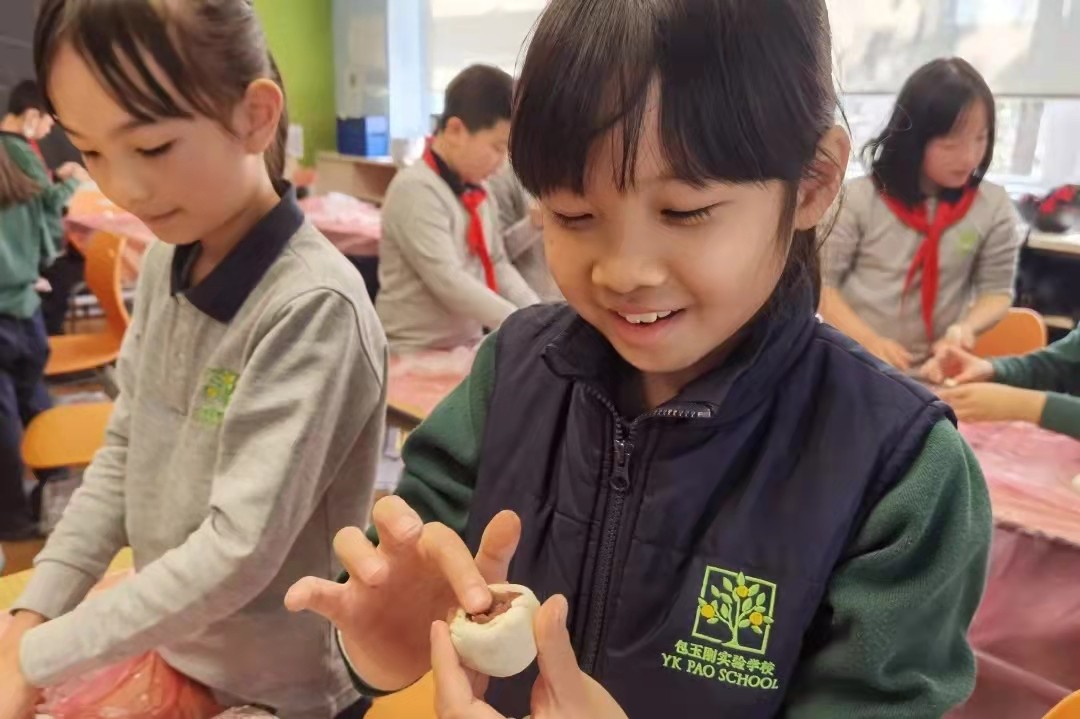
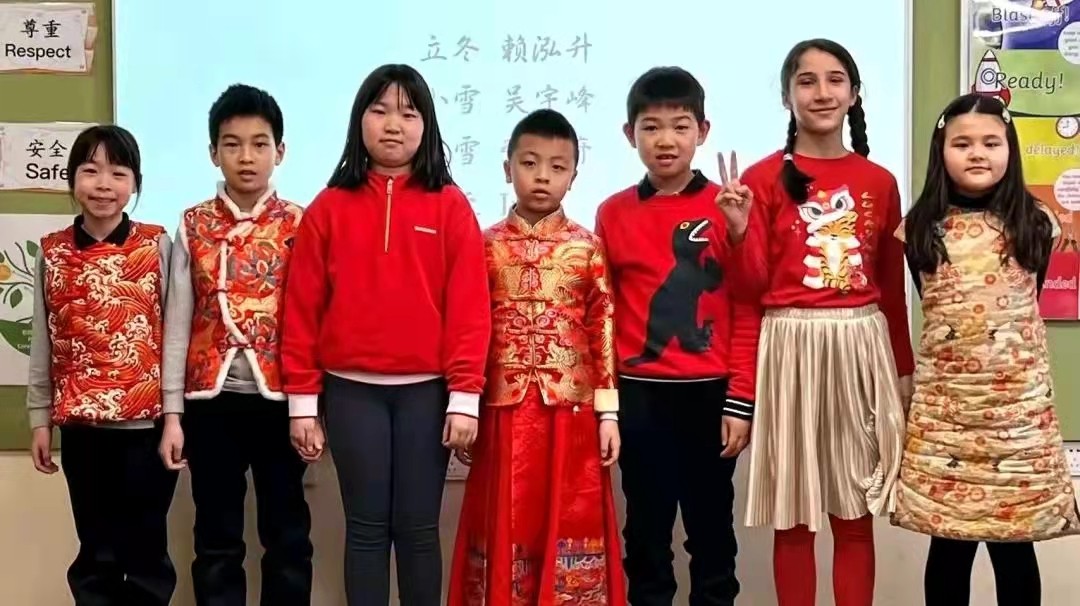
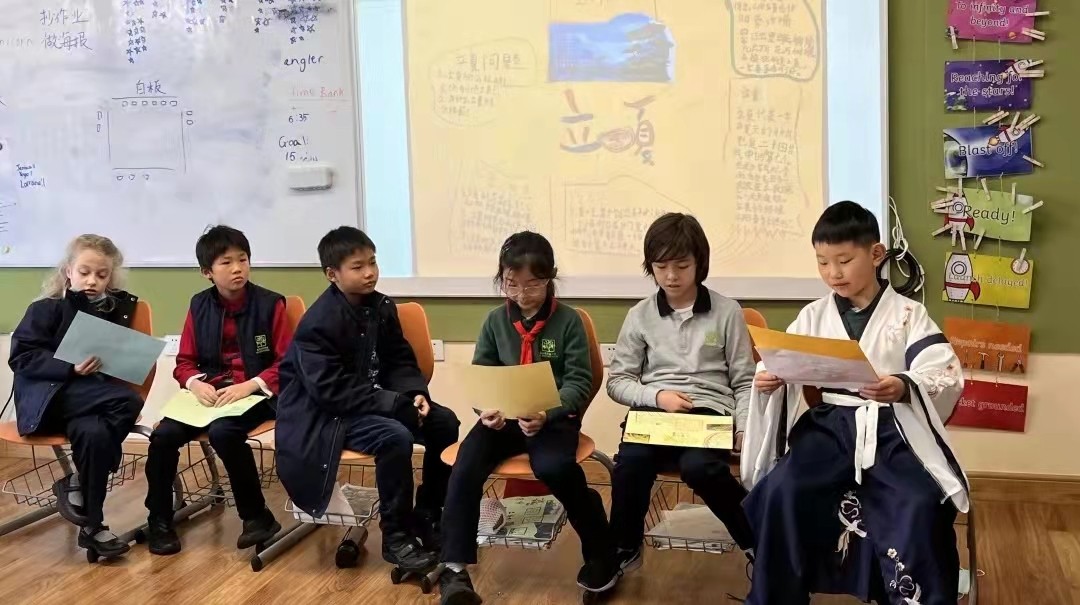
Year 3s giving a presentation on the
twenty-four solar terms of the Chinese calendar
The Year 2 theme was the "the Four Gentlemen,” referencing four plants – plum, orchid, bamboo, and chrysanthemum – which have been used symbolically in Chinese literature and art to represent noble values for over a thousand years. During this activity, the children learned about the plants and their respective significance in traditional Chinese culture. The activity required the students gather relevant materials, work as a team to complete a poster, and give a presentation to the class. This process helped them to understand how to conduct themselves “in a noble manner” and reinforced Pao School's core values of compassion, integrity and balance.
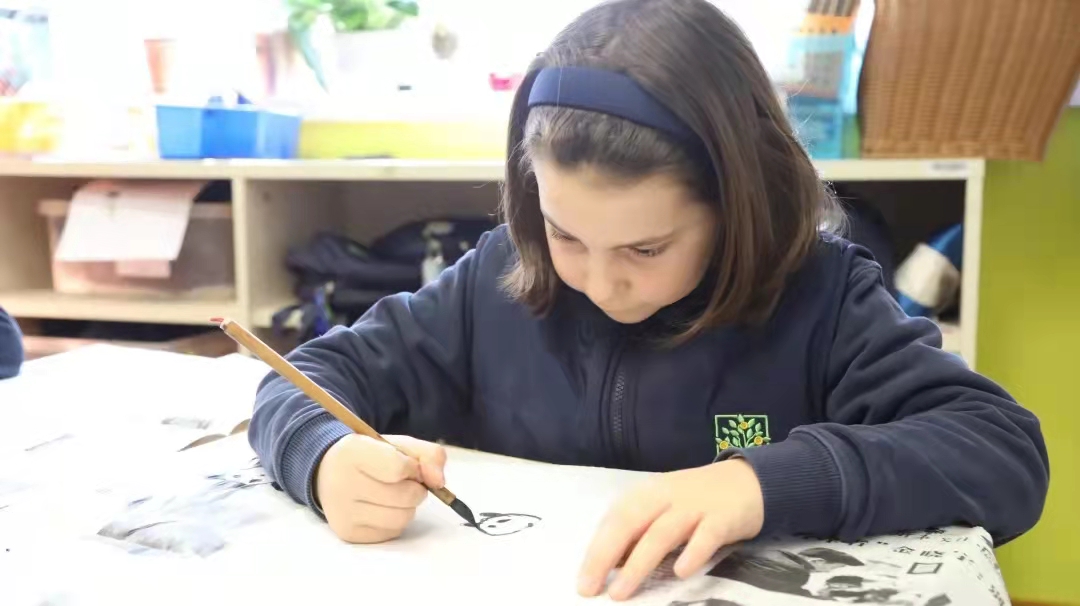
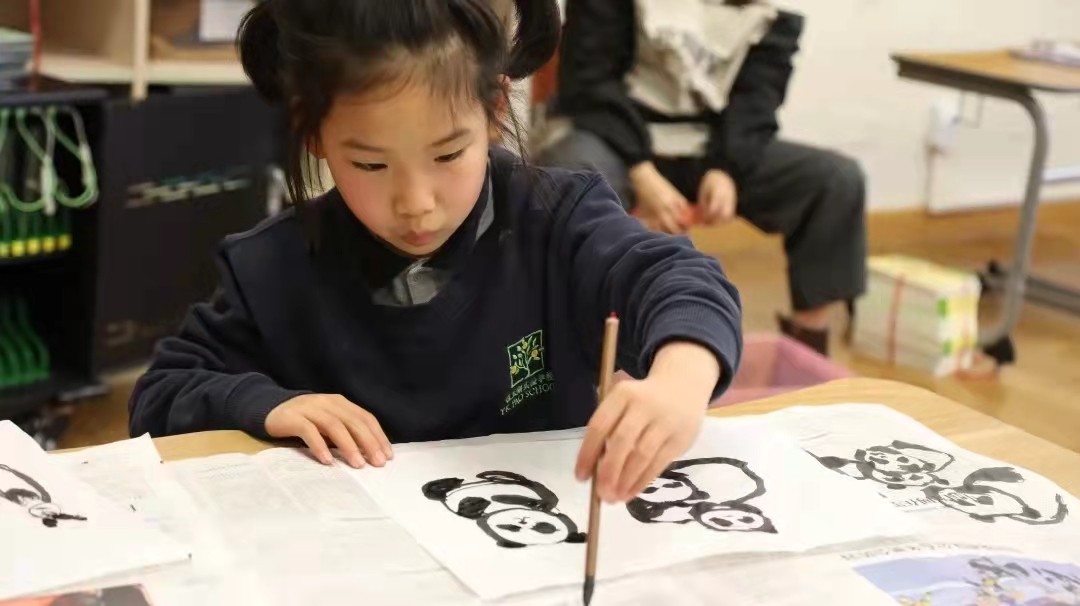
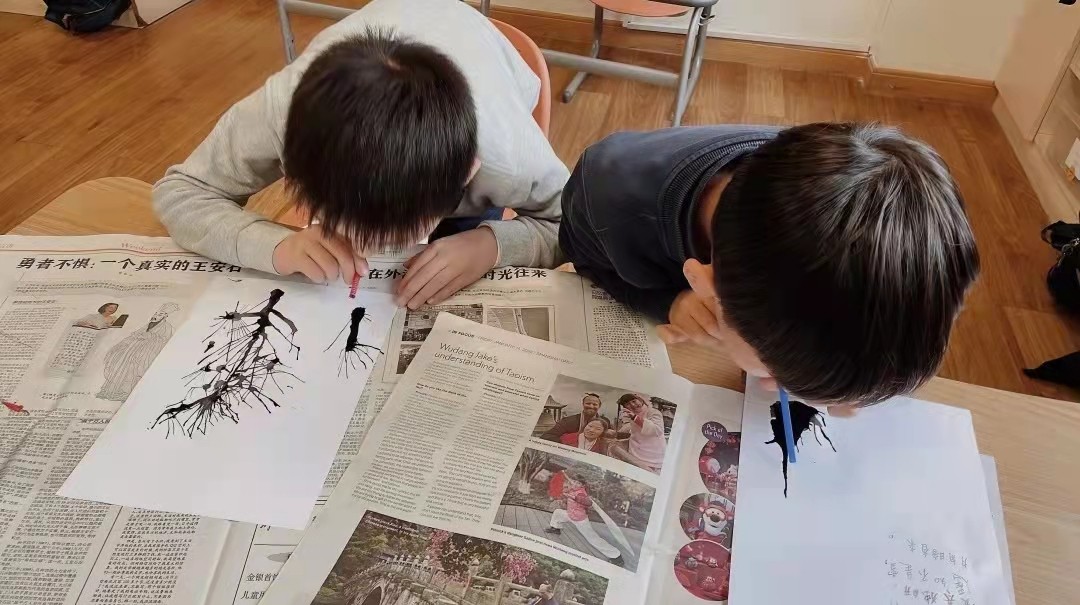
Year 2s learn to make Chinese traditional art
The theme for Year 1 was the Chinese zodiac. During the week, the students watched videos to learn how time was measured in ancient China and its relationship with the animals of the zodiac, alongside learning the tale of how the animals got their place in the zodiac. The students also studied Chinese idioms related to the zodiac and acted out the stories behind the idiomatic expressions in drama performances. Through integrating fun reading and drama activities, the children boosted their linguistic expressiveness, teamwork skills and cultural literacy.
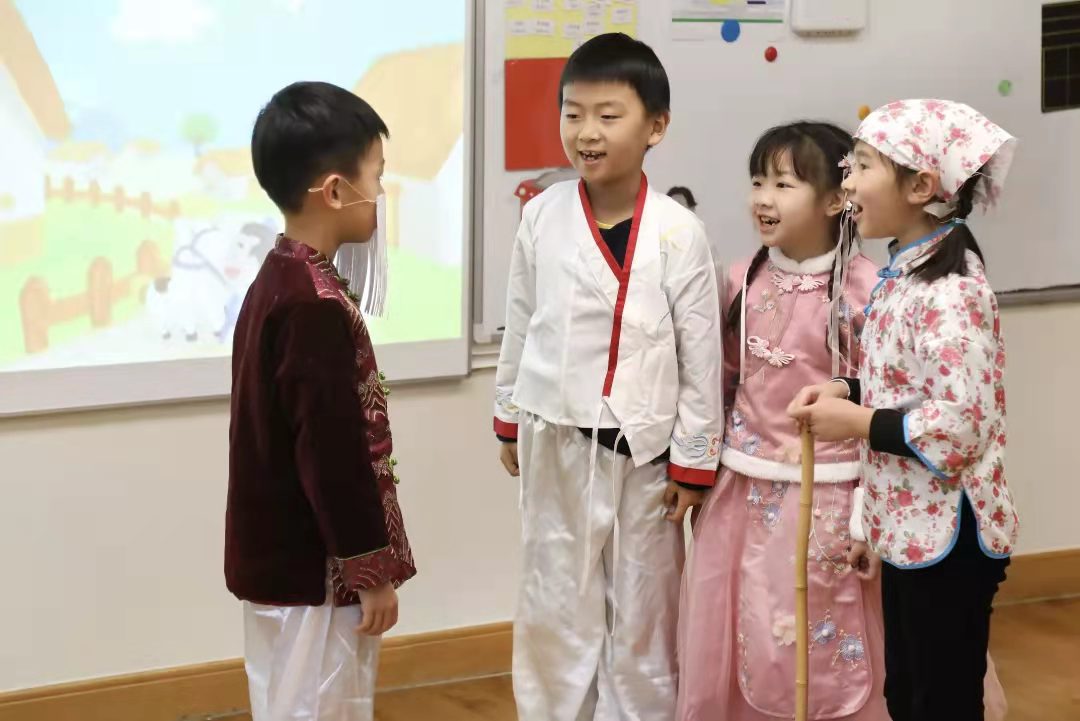
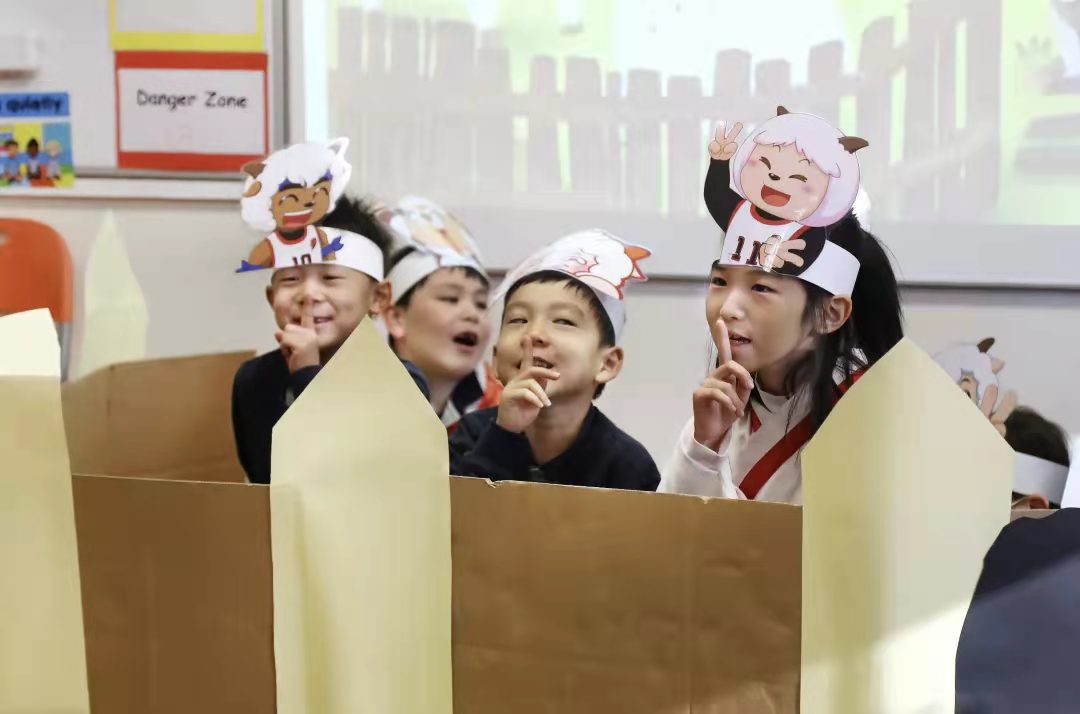
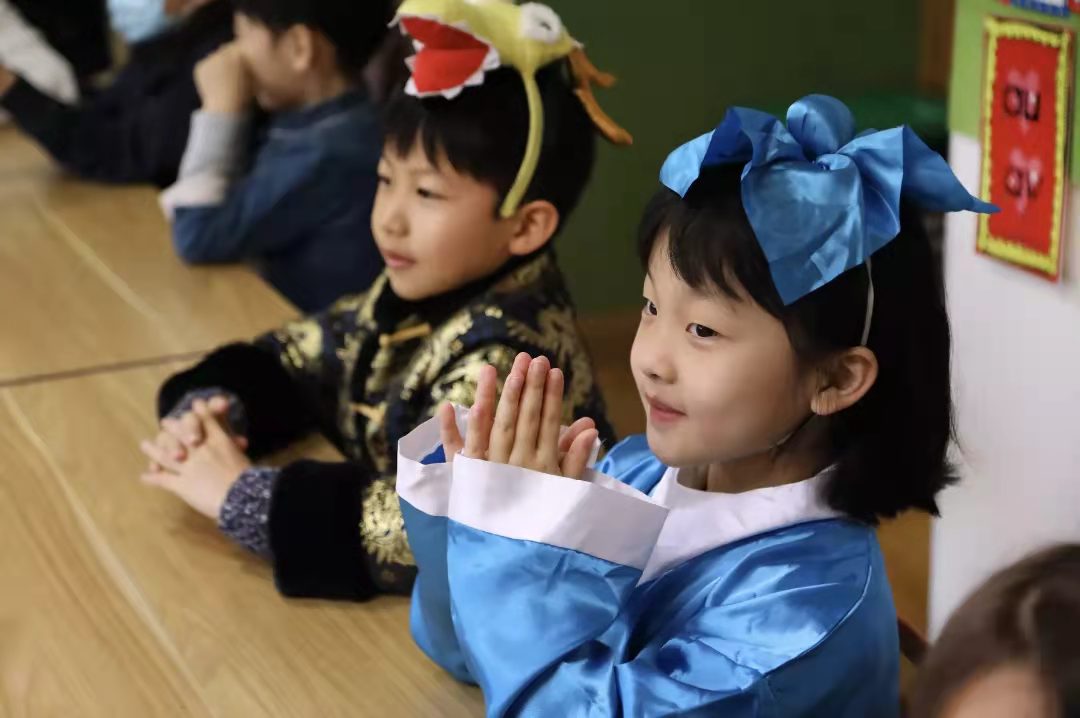
Year 1s perform Chinese idiom stories related to the zodiac
In addition, there was also a design contest that allowed students to fully demonstrate their understanding of the subject they learned by creating their own stickers.
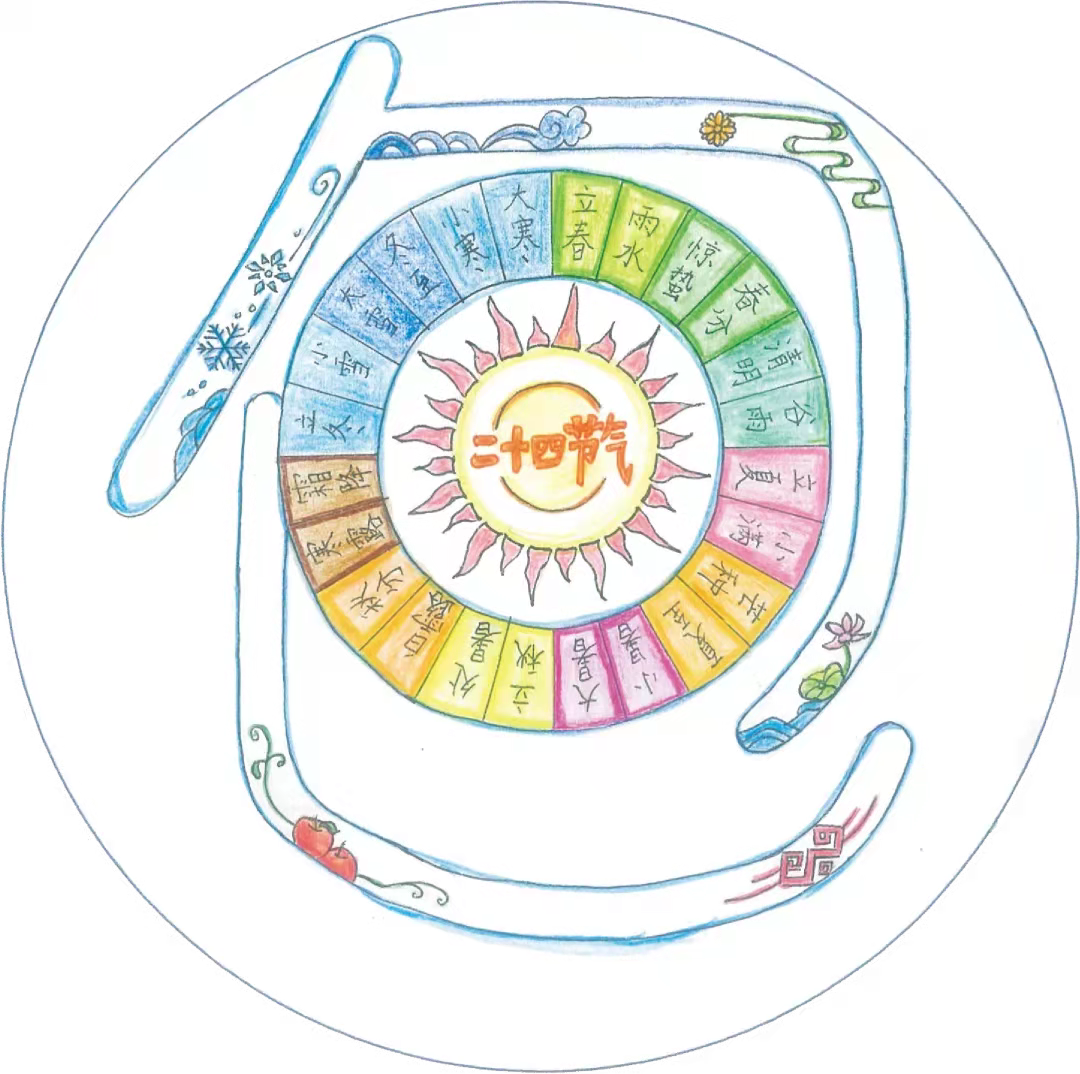
In the middle of the “bao” (包) character, I’ve included the 24 solar terms table. I put a sun in the middle, because the solar terms are divided by the sun’s movements. On the outside, I’ve included pictures that are related to Chinese traditional culture and the four seasons.
——Y3A Amy
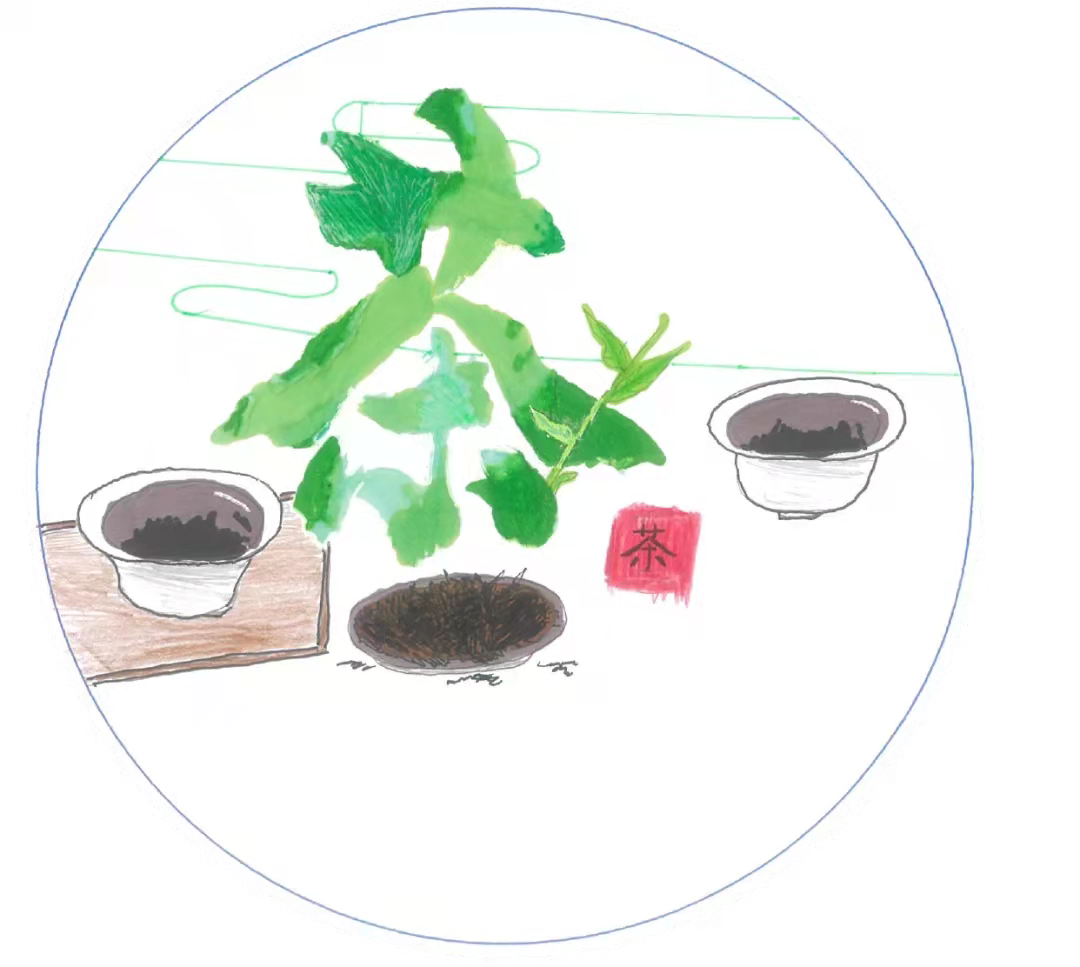
Tea leaves are green, Pao School’s logo is also green, so I used green for the dominant tone of my sticker. In the middle of the design I’ve included unpicked tea leaves, dry leaves and tea. I’ve also used curvy green lines to show the tea’s aroma.
——Y4D Anna
Excellent Student Works
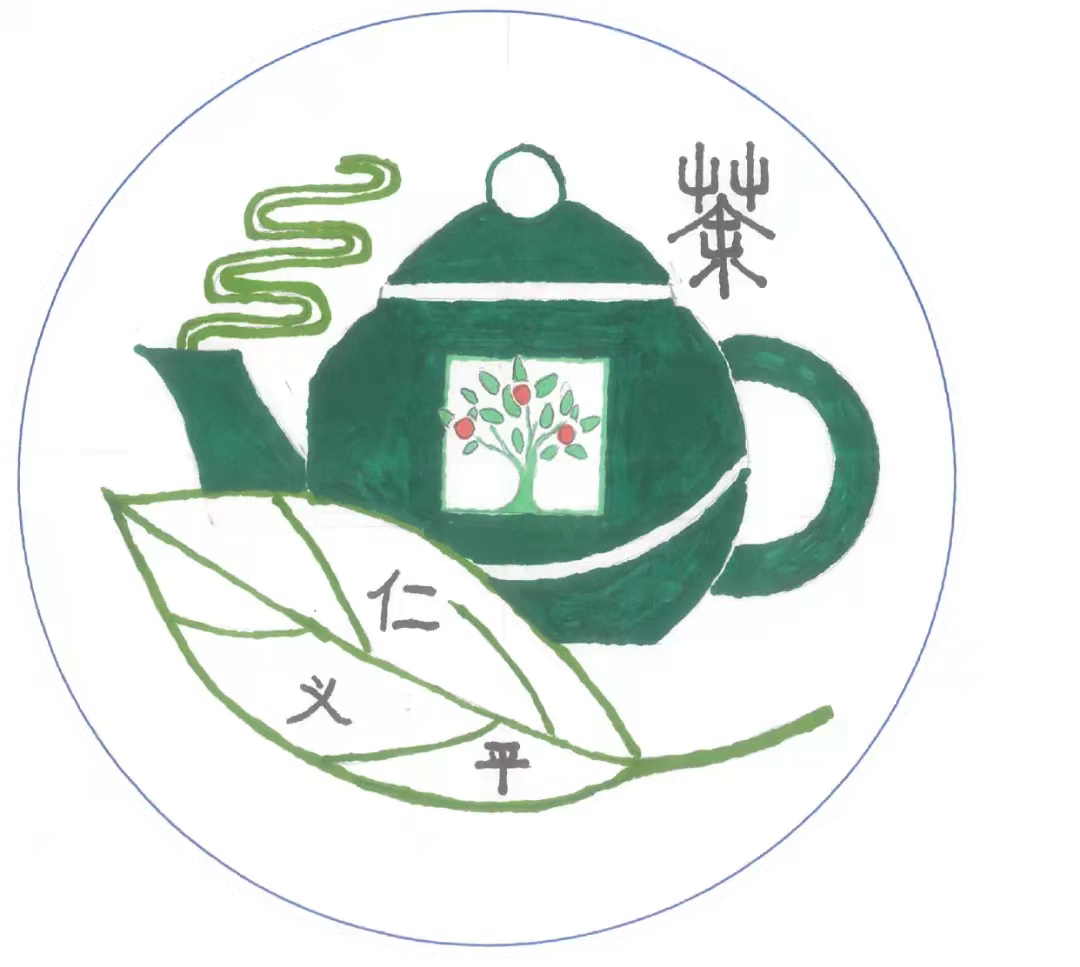
Y4A Thomas
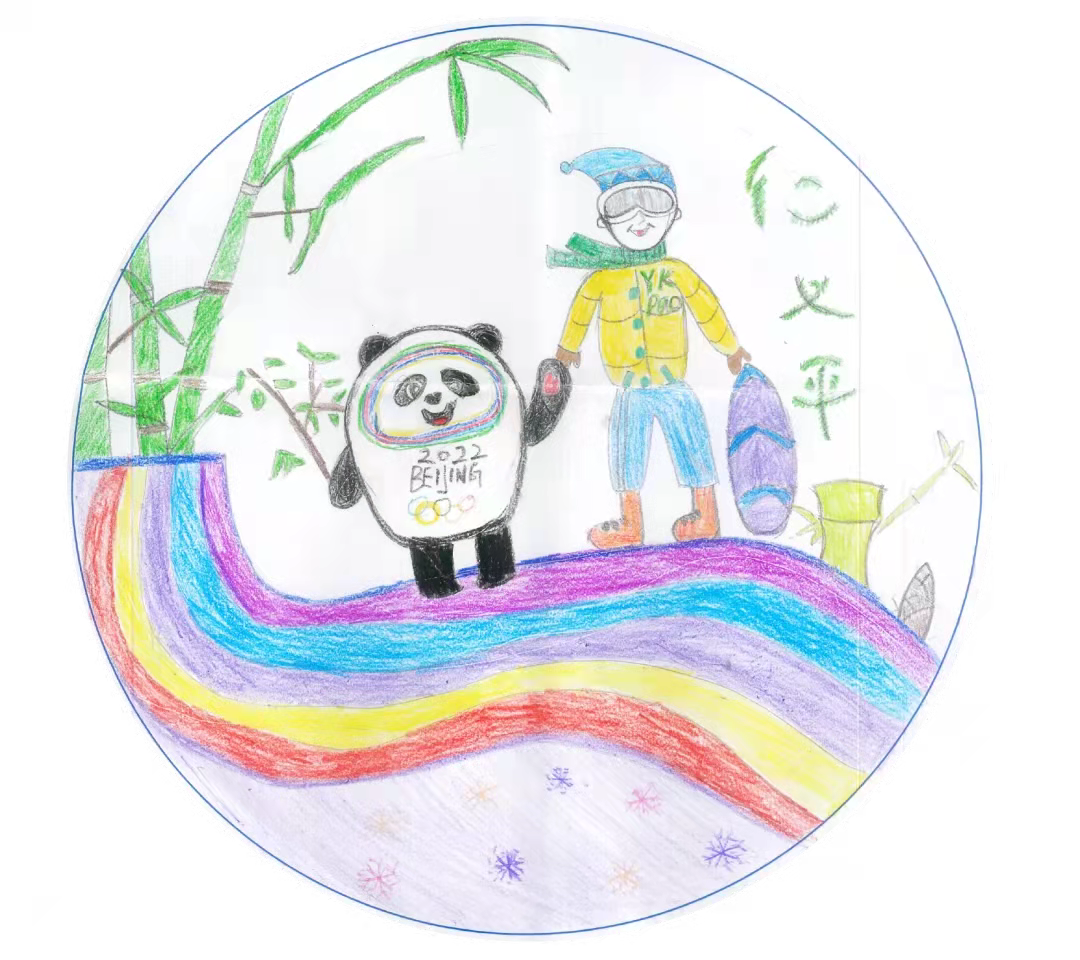
Y2A Leon
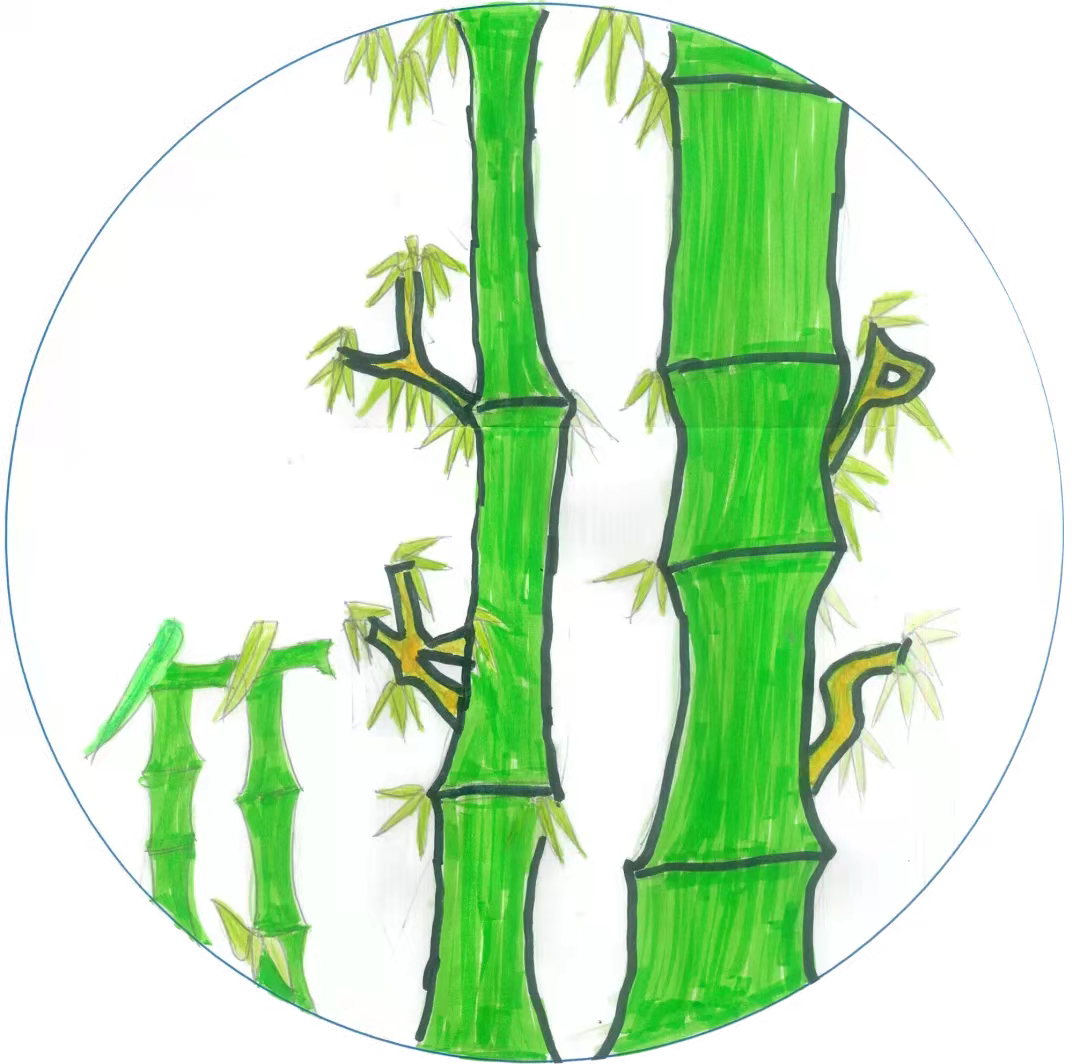
Y2E Chris
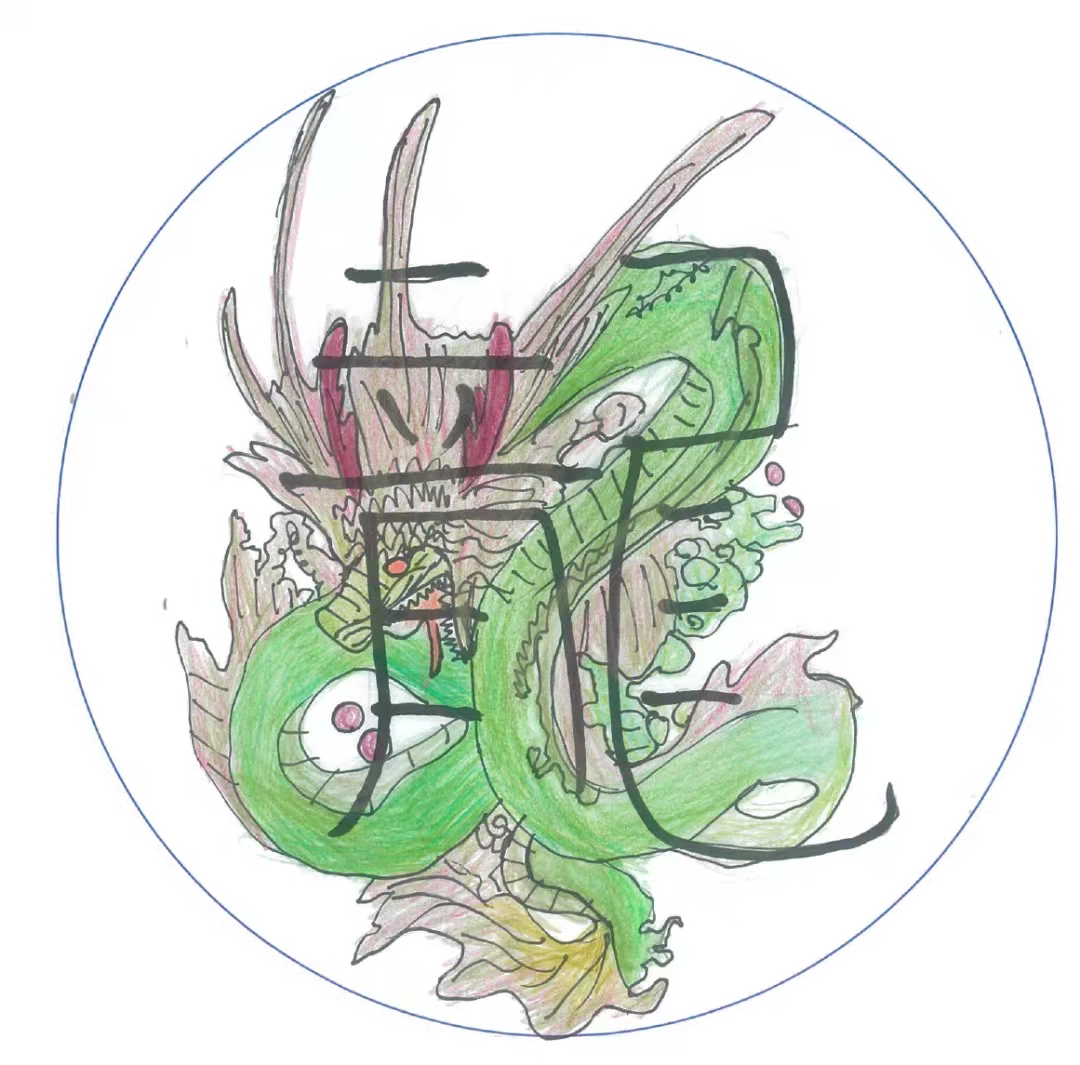
Y5C Linda
Learning and Reflection
My favourite line from the poem "Bamboo in the Rock“ by Zheng Xie is "Upright stands the bamboo amid green mountains steep". The poem represents the tenacity of bamboo and when we encounter difficulties in life, we should learn from this.
——Y2E Bowen
I learned a lot from Chinese Culture Week, such as working as a team, tea ceremony etiquette, and how to brew tea. I’ve learned more about tea, and introduced the interesting information to my classmates and teachers in a presentation. At the same time, I also learned from my classmates at the Tea Expo booths.
——Y4B Dorothy
The Middle School held the second annual poetry competition, which was fiercely contested. 12 contestants eventually advanced to the finals, which were held in early March. In the end, Heidi (Y7) won the championship.
Heidi become interested in poetry as a child after reading "The Literary History of a Happy Dead Person." One of the stories in that book sparked her fascination with Chinese literature, especially poetry. From that point on, whenever she came across a poem she liked, she would recite it and write it down. Later, she attended an online poetry class taught by Professor Dai Jianye, a Chinese Classical Literature professor at Central China Normal University. With this, Heidi has developed a deeper understanding of the beauty of Chinese poetry.
"Participating in this poetry competition has made me understand having a clear goal is a powerful motivating factor, and that we must work methodically and be persistent to achieve our goals and realise our dreams,” she says.
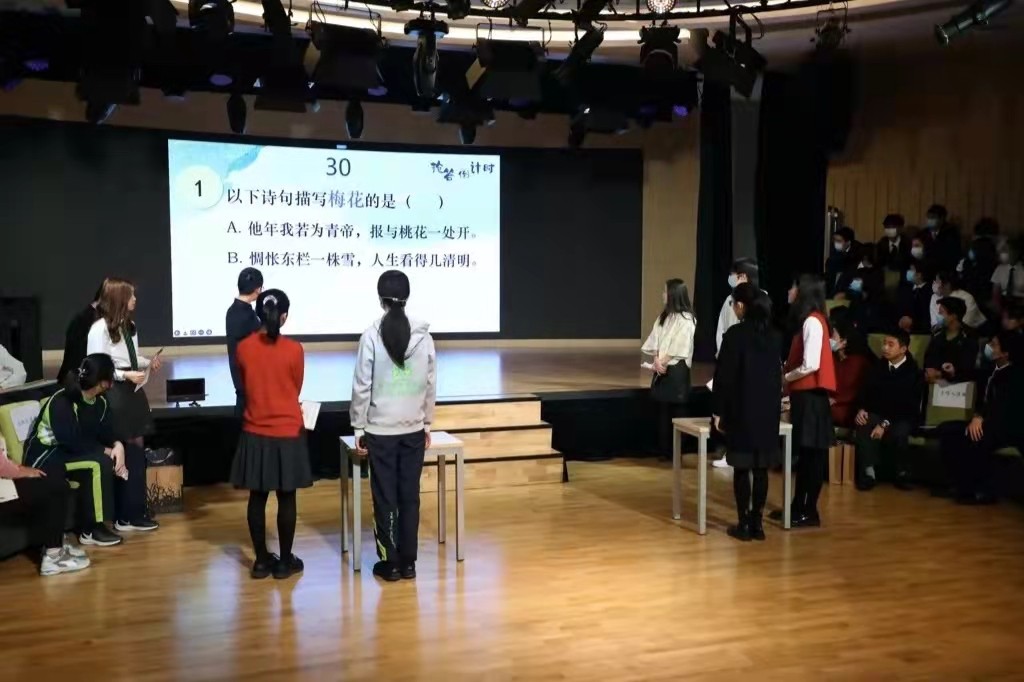
The finals of Pao Middle School's
second annual poetry competition
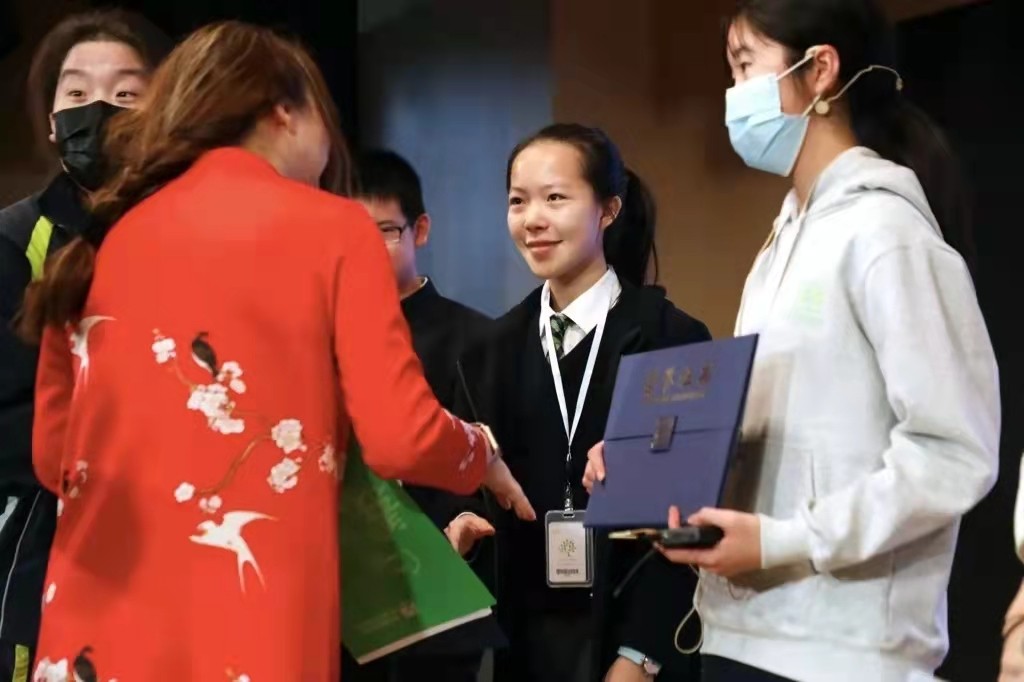
Principal Caroline Xu congratulates the winner
In the finals, the audience not only enjoyed the poetry, but also musical performances by Pao School students and teachers. The performances included a rendition of "Colorful Clouds Chasing the Moon” by the Year 6 advanced string orchestra, "Song of the Flying Phoenix" by the Guzheng Club, "Do You Know" sung by teachers, "Numbers in Poetry" by students from Year 7, "The Peony Pavilion" by Year 6’s small folk orchestra, and “Three and a Half Sentences” performed by international students and teachers.
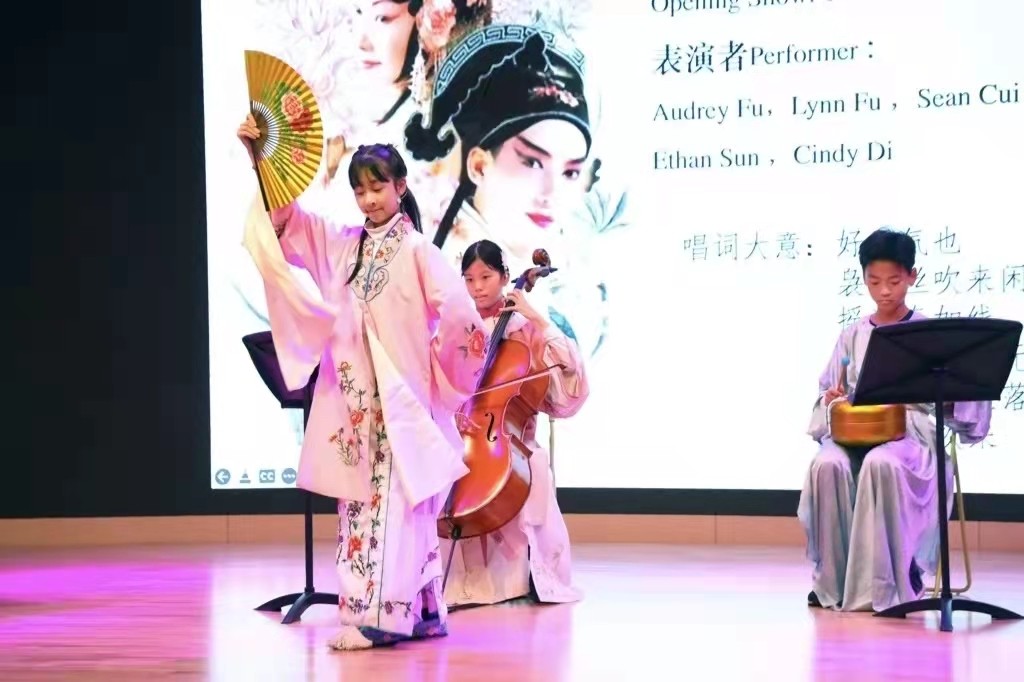
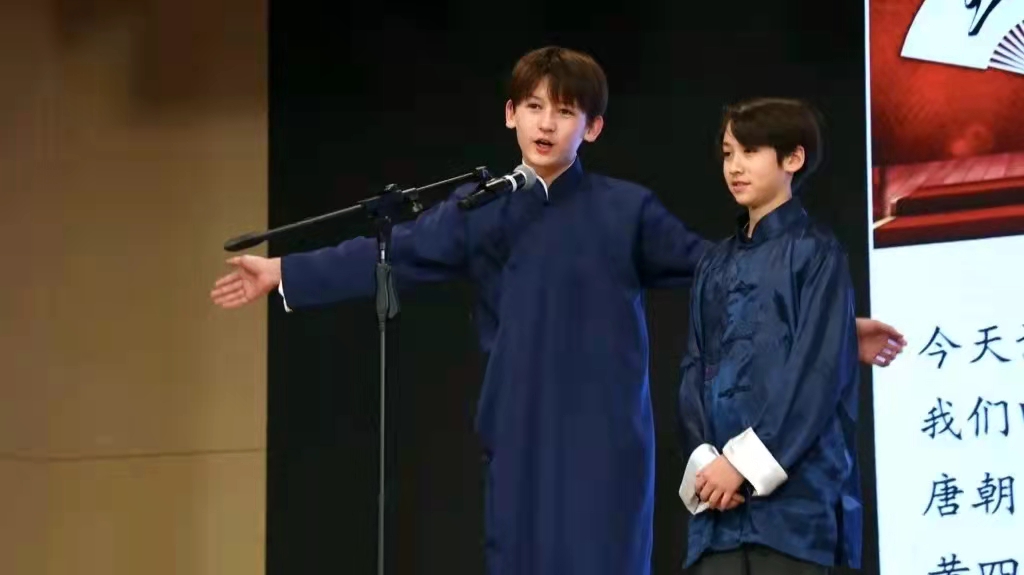
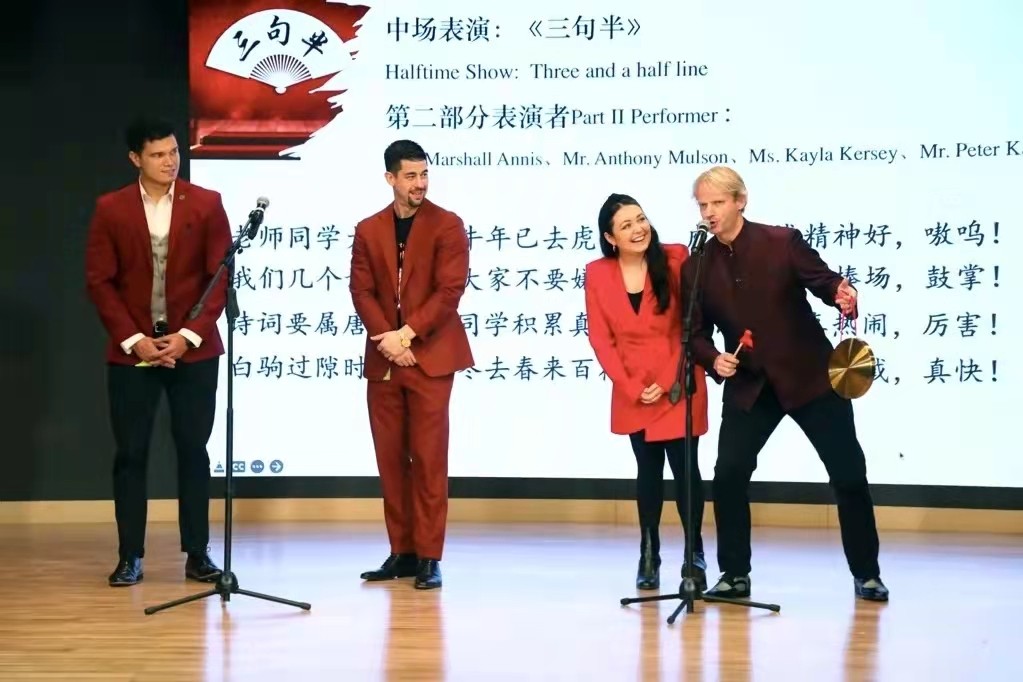
Chinese cultural performaces at
the poetry competition final
In the school’s first floor lobby and outside the auditorium the students’ outstanding artistic and literary works were put on display. Students of different years all participated in the Chinese Culture Week in a number of ways: poems and paintings by Year 6, videos by Year 7, and posters by Year 8.
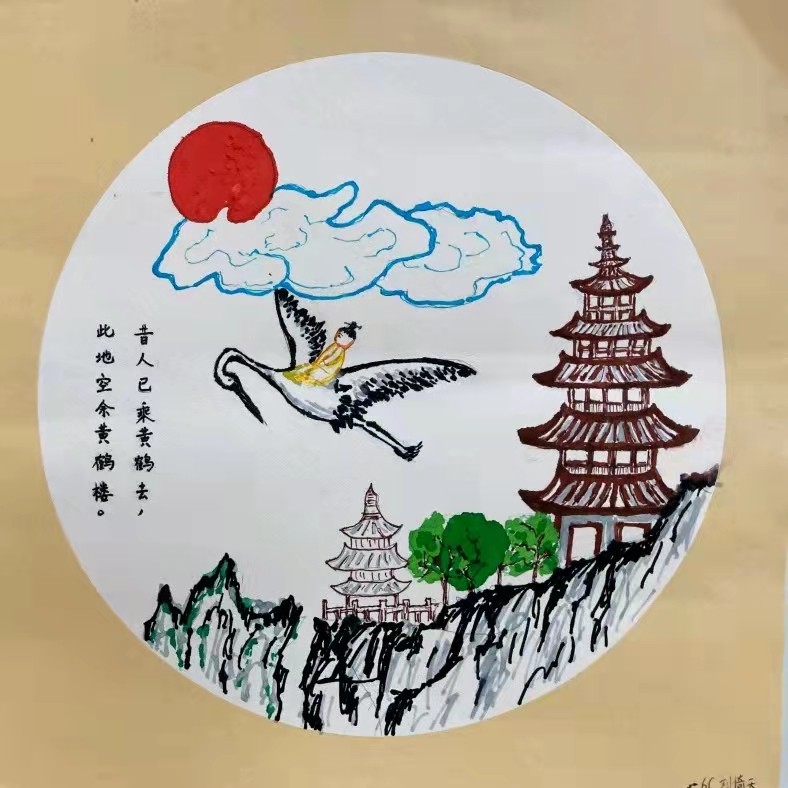
Y6C Yitian
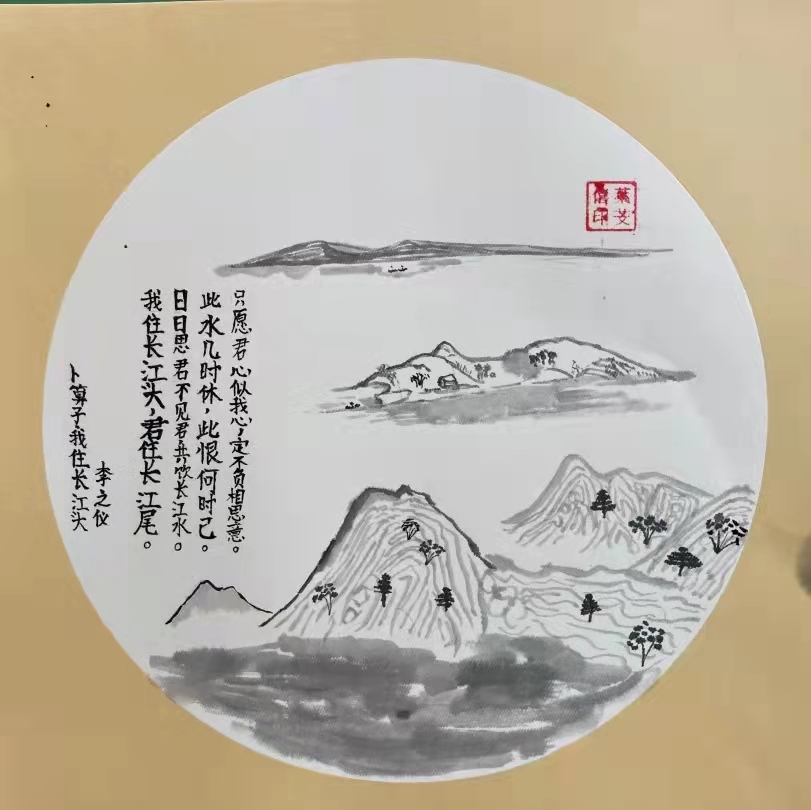
Y6D Jasmine
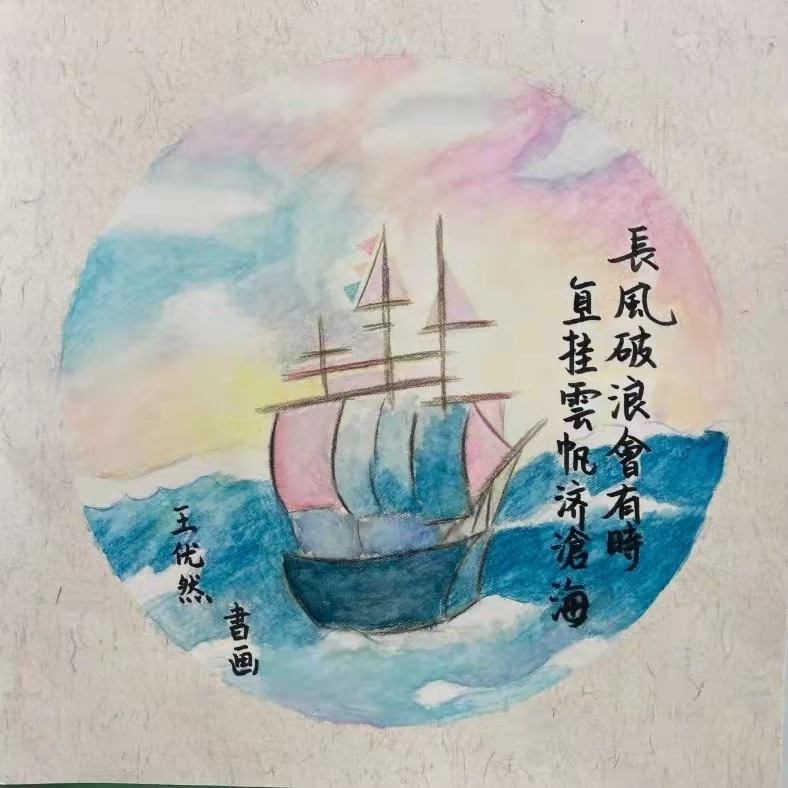
Y6A Yoyo
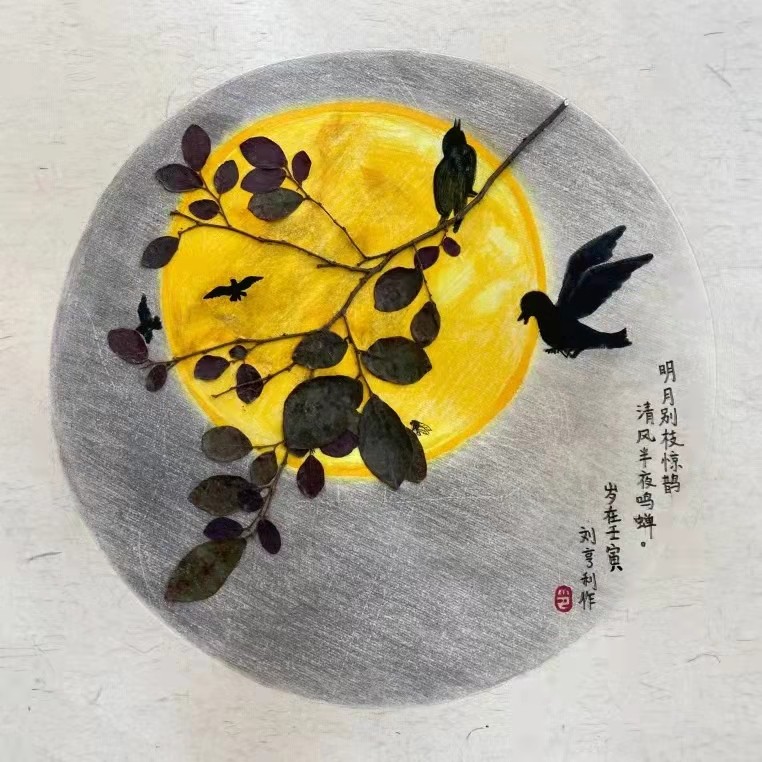
Y6D Henry
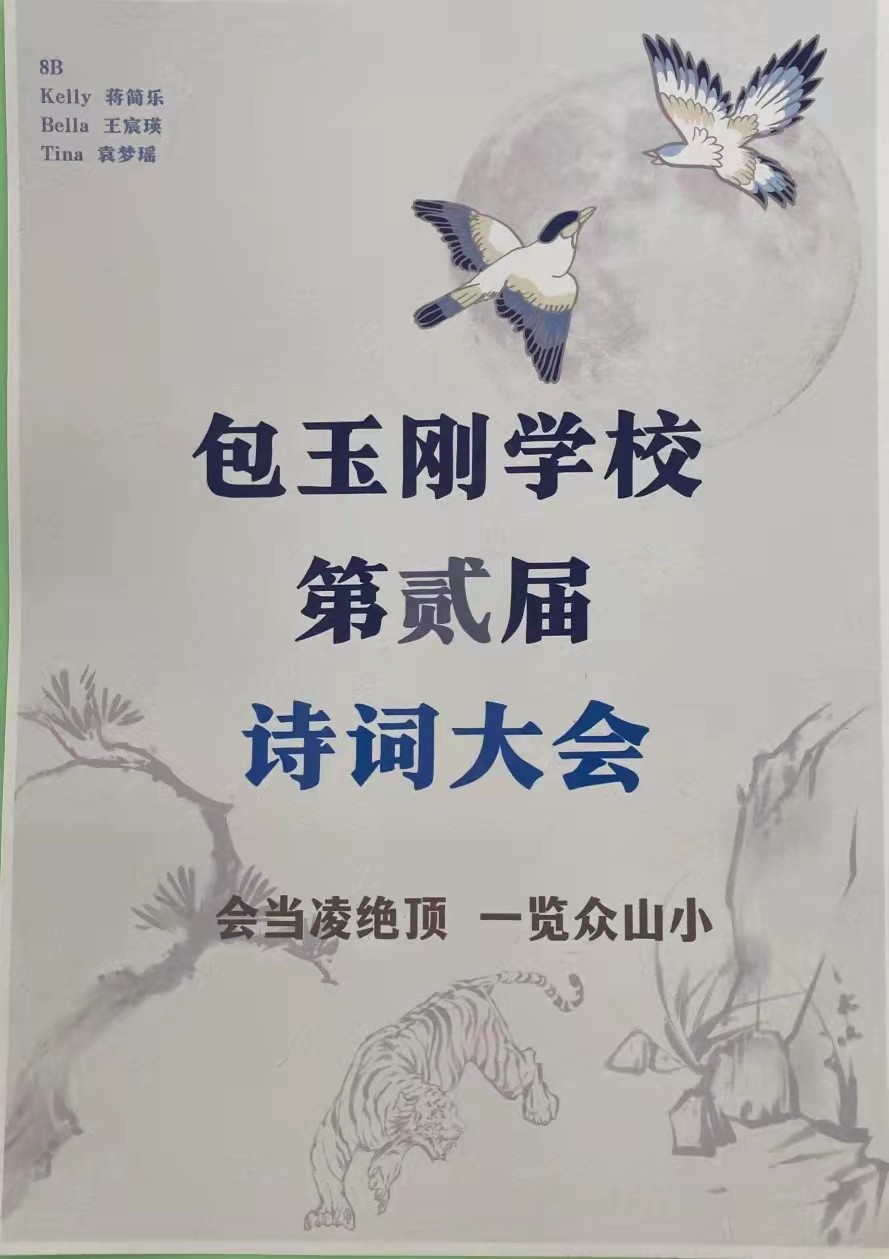
Y8B Kelly, Bella, Tina
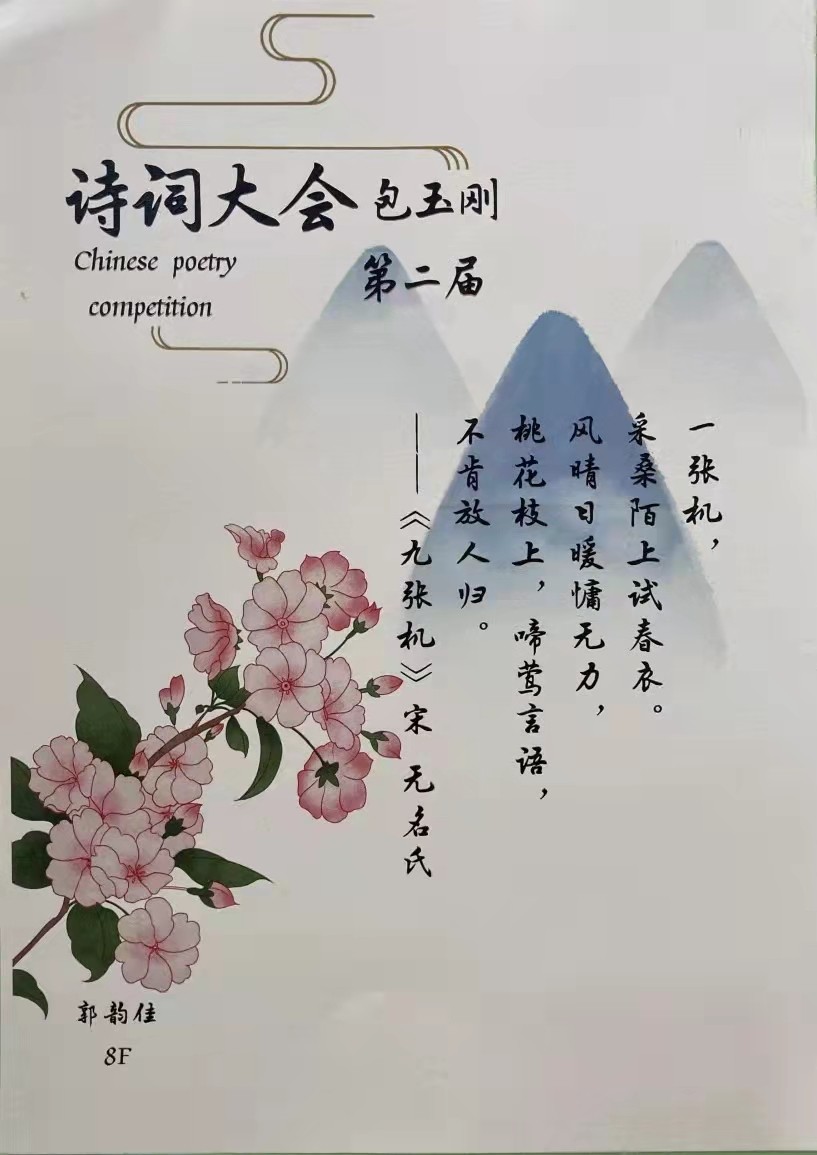
Y8F Gloria
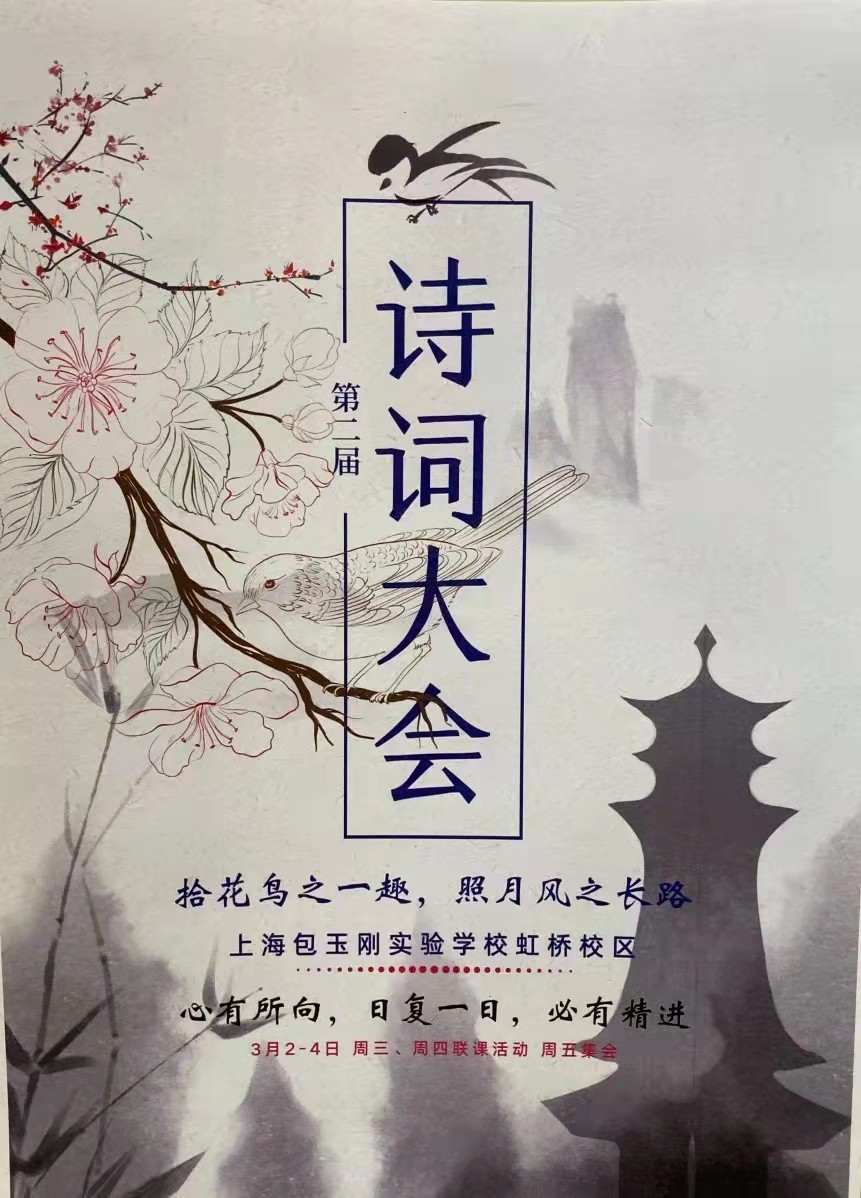
Y8A Lance, Peter, Jason
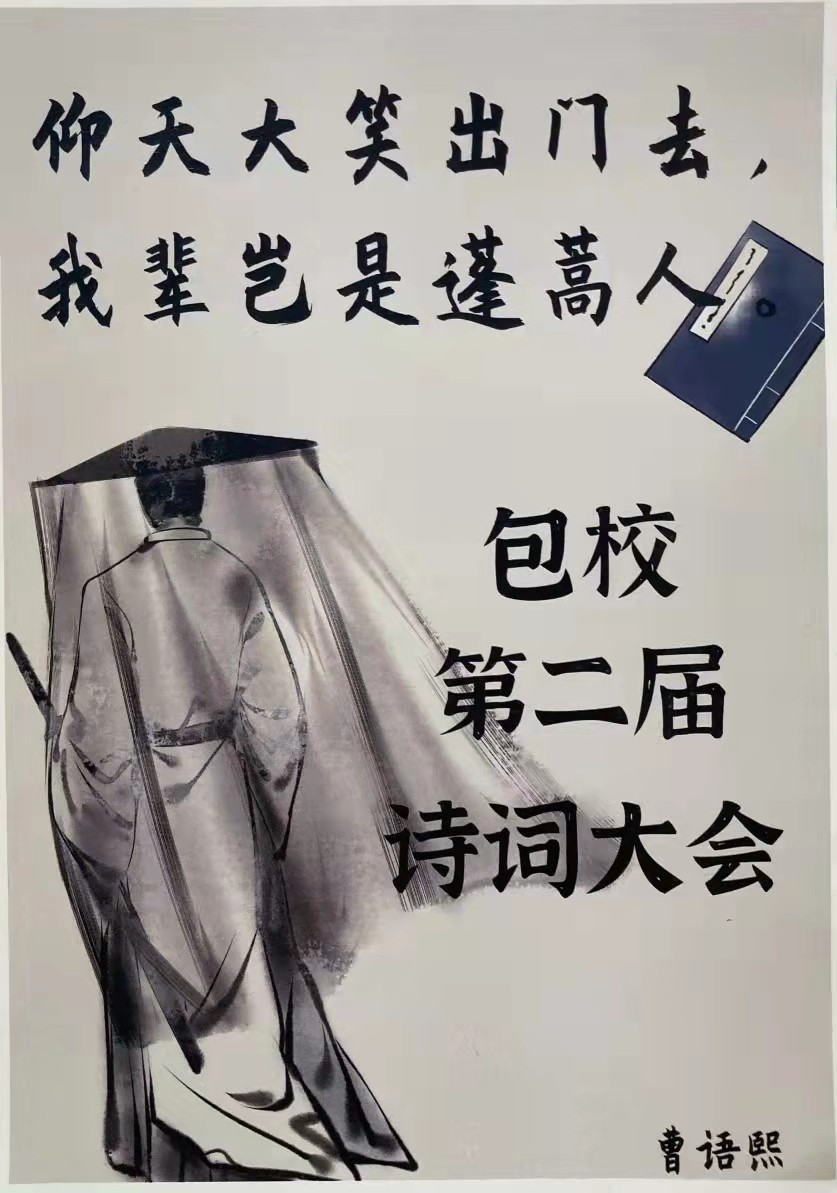
Y8E Taylor